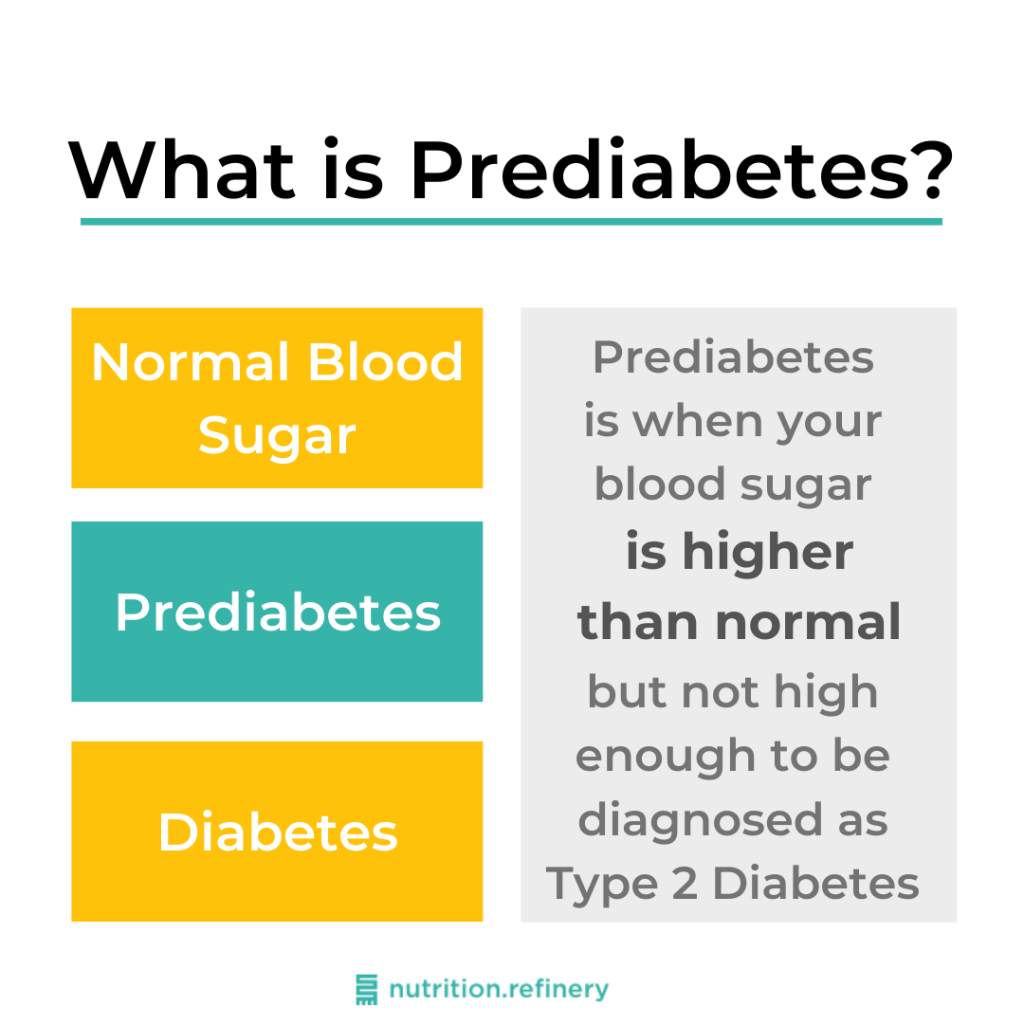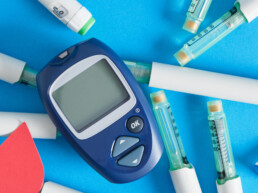Have you been diagnosed with Prediabetes? Are you wondering what it actually means? Are you concerned about the health risk it poses? Would you like to know if Prediabetes can be reversed? Here are 5 things you should know about Prediabetes and what the diagnosis can mean for your long-term health.
What is Prediabetes?
As the name suggests, Prediabetes is a condition that occurs ‘pre-‘ the onset of full-blown Type 2 Diabetes.
Prediabetes is when blood sugar levels are higher than normal, but not high enough to be diagnosed as Type 2 Diabetes.

Prediabetes is a serious health concern that affects millions of people in India. It is a condition characterized by blood glucose levels that are higher than normal but not high enough to be classified as diabetes. It is estimated that over 77 million adults in India have prediabetes, and most of these individuals are not aware of their condition (International Diabetes Federation [IDF], 2021). Therefore, despite its prevalence and potential health consequences, prediabetes often goes undiagnosed and untreated. Prediabetes is turning into a silent epidemic in India.
What can it lead to?
Unfortunately, what most people don’t know is that they are at high risk of developing Type 2 diabetes. As the name suggests, Prediabetes puts you directly in the path of developing Type 2 Diabetes. According to the ADA (American Diabetes Association), approximately 70% of the peopple diagnosed with Prediabates develop full-blown Type 2 Diabetes. Moreover, it also increases the risk for other metabolic disorders that genrally follow elevated blood sugar levels. To name a few: hypertension, cardiovascular disease and other health complications. Not surprisingly, Prediabetes is regarded as a serious health condition by the CDC (Centers for Disease Control and Prevention), USA.
Individuals with prediabetes are also at increased risk of developing retinopathy, neuropathy, and nephropathy. The risk of developing these complications can be reduced through early detection and management of prediabetes. It’s important to understand that Prediabetes can be reversed by making lifestyle changes. Look at losing weight, increasing physical activity, and adopting a healthy diet to start the journey.
1. What causes Prediabetes?
The onset of Prediabetes is usually preceded by a condition known as insulin resistance. When we eat food, and carbohydrates in particular, blood sugar is released into the bloodstream. The body maintains a narrow range for healthy blood sugar levels. To achieve this, it has a mechanism for moving excess blood sugar from the blood stream and into the cells. Insulin facilitates the movement of this excessive the blood sugar into cells for storage and energy.
When the cells don’t respond to insulin, blood sugar levels continue to rise, and remain elevated for a long time. In the early stages, the rise is not very high, and thus you may receive a diagnosis of Prediabetes. Eventually, if left untreated, blood sugar levels continue to rise, and this pre-condition progresses to Type 2 Diabetes.
2. What are the symptoms?
Surprisingly, Prediabetes usually has no symptoms. This is why most people don’t know that they have Prediabetes. This is why it is often called the “silent” condition. However, some people with prediabetes may experience symptoms similar to those of type 2 diabetes:
- Increased thirst
- Frequent urination
- Fatigue
- Blurred vision
- Slow healing of cuts or bruises
3. Diagnosis
Simply speaking, a few easily availble blood tests can help determine whether a person has Prediabetes or not:
HbA1c, Fasting Blood Sugar and Post-meal Blood Sugar
These could be important tests to run, particularly if find yourself in one of the following risk categories…
Who is at risk?
While this list isn’t conclusive, it’s a good start to figure out if you are a higher risk. Generally, the following factors increase your chances of of developing Prediabetes:
- being overweight or obese
- being 45 years or older
- having a parent or sibling with Type 2 Diabetes
- being physically inactive less than 3 times week
- having had gestational diabetes
- having PCOS
- being of Asian , African, Hispanic/Latino, American Indian and Pacific Islander descent
According to the American Diabetes Association, a person with prediabetes has a fasting blood glucose level between 100-125 mg/dL. Additionally, prediabetes can also be diagnosed if a haemoglobin A1C level is between 5.7% and 6.4%. On the other hand, a normal fasting blood glucose level is less than 100 mg/dL while a normal haemoglobin A1C level is less than 5.7%.
4. Importance of Early Detection and Management
Early detection and management of prediabetes is crucial in preventing the onset of type 2 diabetes and its associated complications. Studies have shown that lifestyle interventions can reduce the risk of developing type 2 diabetes by up to 58% in people with Prediabetes.
5. Can Prediabetes be reversed?
Yes! Making lifestyle changes that include cleaning up your diet and eating balanced nutritious meals; losing weight if you’re overweight; and increasing your level physical activity can go a long way in helping you reverse Prediabetes.

Specifically, losing just 5-7% of your body weight and exercising for 150 minutes per week can be significant. These changes can improve both insulin sensitivity and blood glucose levels. Additionally, a diet rich in whole grains, fruits, vegetables, lean protein, and healthy fats can help reduce the risk of developing type 2 diabetes. Don’t forget to limit processed foods, sugary drinks, and saturated and trans fats! Other things that can help include reducing stress, treating sleep disorders, quitting smoking and reducing or eliminating alcohol intake. This is your ‘window of opportunity’ to prevent the onset of Type 2 Diabetes.
Would you like some help?
Have you been diagnosed with prediabetes? If so, it is important to take action to manage your condition. Take action and reduce your risk of developing type 2 diabetes and other health complications today.
I am a Certified Type 2 Diabetes Prevention Lifestyle Coach aka Prediabetes Coach. Get in touch if you would like to learn more about how Prediabetes can be reversed. Lifestyle changes, followed consistently, are key to the process. However, if the idea of figuring it all out is overwhelming, then enquire about my ‘Reverse Prediabetes’ programme. Through this programme, I will teach you how to make the necessary nutrition and lifestyle changes that have been proven to work. I can help you set achievable goals and provide you with the support and motivation you need to make lasting changes to your health habits. With my help, you can take control of your health and reduce your risk of developing type 2 diabetes. Contact me today to learn more about how I can help you manage your prediabetes and improve your overall health and wellbeing.
SHARE

Madhavi Shilpi
Nutritionist
Prediabetes Coach
Related
Insulin Resistance: symptoms, causes & more
Insulin resistance (IR) is a condition in which the body's cells do not…
5 ways to get sugar out of your life
Does that morning coffee and cookie leave you craving another treat two hours…
My story
Wondering who I am? And why I became a Nutritionist? Read on to get to know…
Fibre: Unlocking the Secrets to Better Health
Are you ready to explore the fantastic world of fibre? If you're not already a…
Proteins: Building Blocks for a Stronger You
Are you curious about the role proteins play in our diet? Do you wonder…
Carbohydrates: Fuel For Your Body
Do you often wonder about the role carbohydrates play in our diet? Did…






